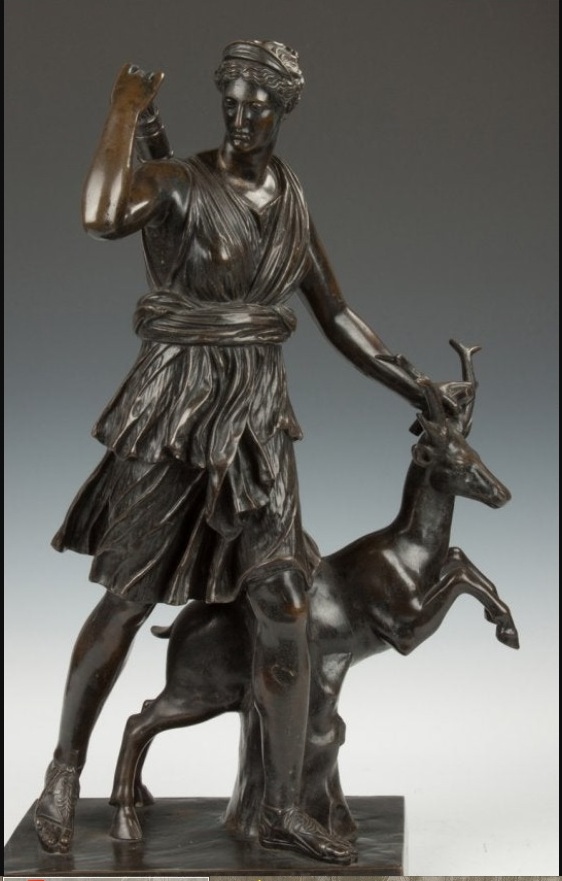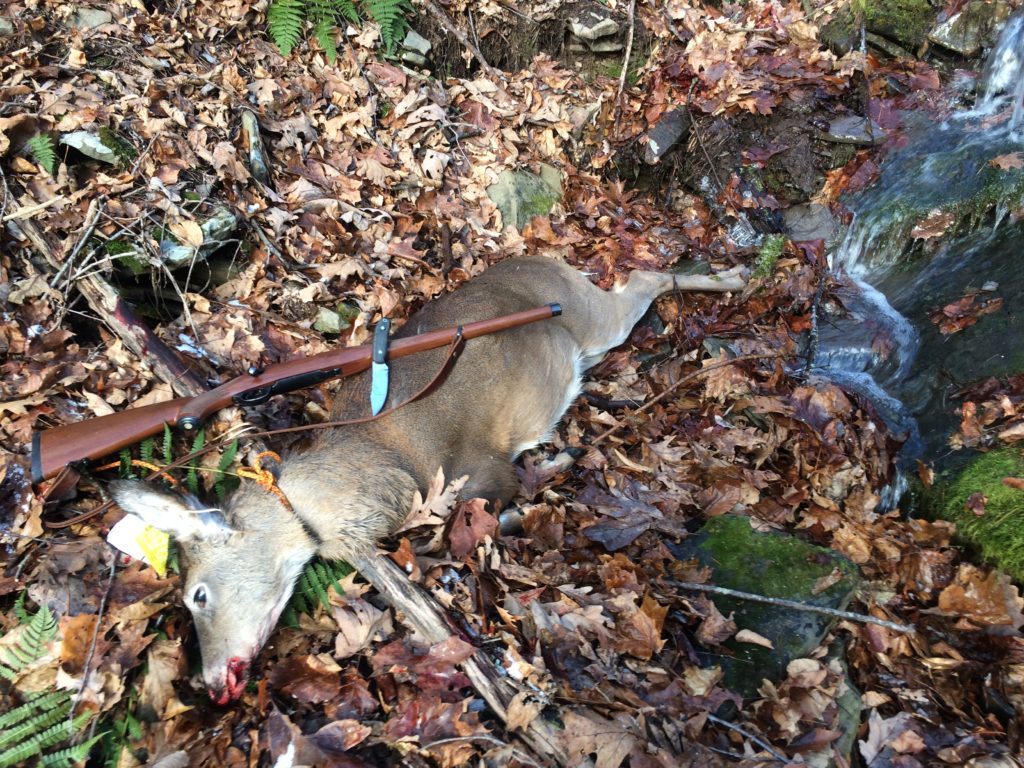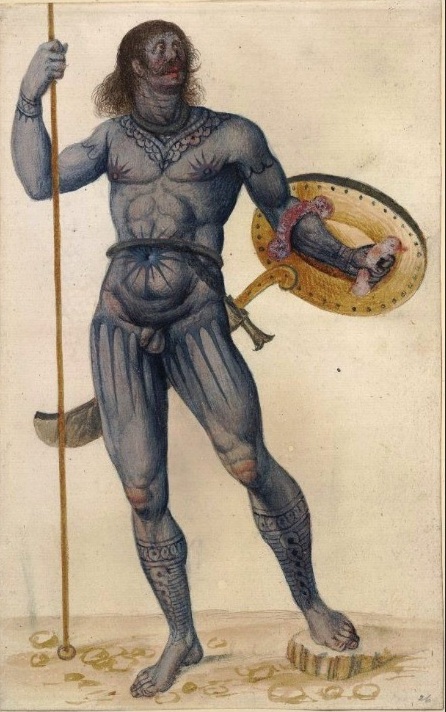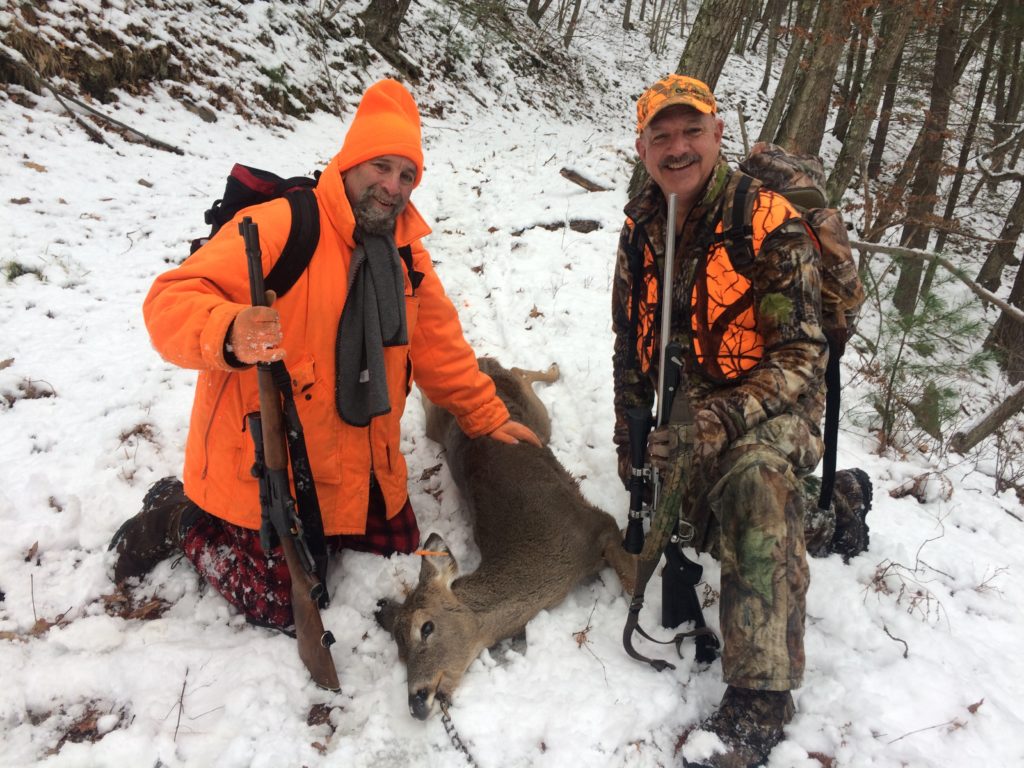Posts Tagged → hunt
Good luck, bear hunters!
Bear rifle season is here in Pennsylvania, starting tomorrow morning, and in many rural places bear hunting has displaced deer hunting as the primary outdoor recreational activity.
Pennsylvania’a bear population is at an all-time (modern times) high, as demonstrated at least in my own small world by the large black bear that showed up a block from my Harrisburg City home last year. Or the other bear that showed up on the same street, but ten blocks closer to the down-town area, a few months later. When bears are showing up in major cities, you know their regular rural habitat is filled up, and the younger generations are looking for new homes.
So good luck to Pennsylvania’s bear hunters tomorrow through next Wednesday. Our own crew is half of the usual number, due to some guys fearing the CCP virus, and some others having health emergencies at home that prevent them from traveling. Normally we field guys from five states across the East Coast, and at one time, all the way from California. Last year we had a guy from England. Usually the cabin is packed and noisy, and this year it will be more subdued. Nonetheless, despite the challenges this year, we will still field a hunting crew. Some will be out tomorrow, some out Sunday, and some out the rest of the week.
Here in the hills, we have not seen bear sign for a long time, which is surprising. Our township here usually produces one of the highest bear harvests in the entire state. We shall see what happens, however, as hunters enter the woods and begin to push animals around. In places where no bears have been seen all year, there could well be a bunch running through.
Good luck to those who are hunting alone, with family, or with their usual chums. For me, this time together just cannot be missed. It comes just once a year, and is gone so quickly that you almost can’t believe it was here to begin with.
Be safe and have fun!
Diana Archer saves my brain from Exploding
Across America brains are either exploding or are on the edge of it.
Mine is on the edge of exploding, because I was expecting an honest election result two weeks ago. You know, where my preferred candidate successfully barnstormed the swing states and generated big results. Instead, the election experienced tremendous voting irregularities, outright open fraud, political interference, and a clear effort to spam the whole process with such an overwhelming number of fake ballots and fraudulent counting that clearing the whole mess up will take a herculean effort. It did not matter that my preferred candidate had worked his ass off, had taken many risks and worked himself tirelessly to persuade an unusual mix of new and old voters to support him.
Instead, what awaited my preferred candidate after Election Day was a slew of fake voting machines that have been tampered with, fake ballots, fake ballot counting with no transparency etc etc across eight states, and a fake media that was pre-pared (like prepared to be prepared) to immediately anoint his opponent the winner, regardless of the actual outcome.
Fake it til ya make it and then election by media acclaim is what has been attempted against my candidate. It is infuriating, because it runs contrary to everything America is about.
Making the post-election period worse than the actual fake tallying process already was, is the mainstream media and Big Tech effort to censor and suppress information contrary to their narrative that Joe Biden won and is now the President Elect. It is one thing to go to bat for an ancient 47-year career politician who is corrupt and senile. It is another thing altogether to try to hide not only his corruption but also the fake election that he “won.”
Interesting that Biden did not win any down-ballot elections across America, almost all of which (98% I think) went for his opponents….no, no predicted “blue wave” happened…Biden just happened to win the “big one.” In real elections, this does not happen, because all of the real votes are correlated with various other candidates, and not just the presidential race. This is Exhibit A in the vote tampering argument.
So those of us addicted to the simple idea of a fair-and-square transparent election have had our heads exploding for two weeks. We cannot believe the unashamed, scandalous behavior that is happening in front of our eyes, what is really an illegal attempt to hijack an entire nation.
While I could sit at my computer and stare wild-eyed into my iPhone as the 1,440 minutes slowly tick by each day that this scandalous process unfolds, like so many friends are doing, I have decided to remove myself from this tense situation. Instead, a lady named ‘Diana Archer’ is taking me out into the woods and fields, where we are going to contemplate life, love, being a balanced human being, etc. I need this time to regain some inner balance that has been thrown askew, and I think about 75-million other voters probably feel the exact same way. Fortunate me that I have Diana to take my hand and lead me on.
To be explicit, Diana Archer is really Diana The Archer, the Goddess of the Hunt. As hunting season has now arrived full force, from deer to bear to ducks to doves, the whole east coast is alive with clandestine rural life, all led by Diana.
With Diana at my side, I intend to sleep snugly in my Seek Outside tent, using its titanium stove to keep warm at night, to boil tea in the mornings, and to dry out inevitably wet clothing. During daylight hours Diana will hopefully be by my side, helping me get into a kind of Thoreau-Wilderness-Zen mindset, where nothing can trouble me, and I become at one with the natural rhythm of Mother Nature and the rifle in my hand. And no, there is no scandal in this pure woman’s company, just the spirit of the hunt, which is often just the hunt for the spirit.
So, see you all in a bit. Forgive me if I am not glued to this computer screen, but am escaped, at least for a healthy while.
Trump Great American Outdoors Act hits Conservation Home Run
Conservation is where I have spent my entire career, and it is where my heart resides day in and day out. So it is with great happiness that I see President Trump sign into law the Great American Outdoor Act, which will do the nuts and bolts environmental protection America needs, without the regulation that America does not need.
The fact that so many political appointees within the Trump Administration were cheerleaders for the GAOA says a lot about the political tenor there. So many people accuse the Trump Administration of being some kind of radical “right wing” blah blah, and the fact is that the entire administration is loaded with middle-of-the-road professionals, who hold a mix of political, philosophical, and ideological views. In past Republican administrations, there were plenty of appointees who would have blocked GAOA, or held it up. GAOA is a signature achievement for President Donald Trump, and it is a huge win for Americans.
GAOA fully funds the Land and Water Conservation Fund for the first time in a zillion years. It provides adequate funding for federal and state parks infrastructure updates, operations, and maintenance costs. These are the costs that are always deferred in every administration. It is a subject I wrote my master’s thesis on at Vanderbilt University, and it is a subject that has never gone away, until now: Federal recreational infrastructure has been woefully underfunded for decades. Many state parks across America are in even worse shape than that National Parks.
For example, in 2016 my teenage daughter and I hiked half of the Northville Placid Trail, which runs through the Adirondacks. At the end of our ninth day, as we waited out a looming thunderstorm in a rustic but comfortable lean-to deep inside designated wilderness, on a hike in which we had encountered only a few other people, my daughter sat looking at her dead iPhone. Like Gollum looking at The One Ring, only my daughter looked more disgusted and glum than happily mesmerized.
“I have to get out of here. I want to talk to my friends. I want to know what is happening in the world. We need to go,” she said, and picked up her backpack, jumped down onto the grass, then shouldered her backpack.
Oh, I tried to persuade her to spend the night and stay out of that coming downpour. But she would have nothing of it, and she set off by her own teenage self, going somewhere, maybe anywhere, and I was standing there watching her pick her way into the forest.
Hours later we emerged at Moose River Plains, what maps describe as a rustic New York State recreational area tucked away deep in the Adirondack wilderness. What we found was a boarded up main building, boarded up out buildings, no gate, and no official staff. Instead, a bunch of locals who regularly camp there had taken over the official duties of park rangers. Even the land line phone system was not working. It was a very kind local who drove us, each drenched to the bone and with sodden packs, to the closest village, where we could contact our driver and get back to our own vehicle parked at a Baptist church in Northville, so my daughter could get home and talk with a zillion friends simultaneously.
Turned out that Moose River Plains was victim to a New York State budget that prioritized funding illegal aliens, but not state parks.
The Moose River Plains experience was worse than our visit the year before to Saratoga National Battlefield, by far. But seeing Saratoga National Battlefield, where the brave fight for American freedom and independence was won, in such terrible disrepair and threadbare means, was frankly shocking. One expects the National Park Service to do so much better. And when we spoke with a park ranger there, she was clearly hurt, personally, as she explained the money constraints that park faced. NPS just could not get the job done.
All of this is to say that finally, money floweth in the right direction. The need out there for public infrastructure is almost beyond compute. It is about time that America invested in our national parks and forests, state parks and forests, local and county parks, and the myriad other adjunct little recreational areas, like Moose River Plains, so that Americans might enjoy our public outdoors.
And about that public outdoors thing: Public land is a public good. Public land is one of the very few things that government does pretty well. And even when government land managers fail, the outcome is almost always simple neglect; the land always remains, the wildlife habitat remains. Which means the opportunity for recreation, hunting, fishing, hiking, camping etc remains. It is not a real material loss when land managers screw up or there isn’t enough money to operate the park entrance gate house; just missed opportunities, and putting a frowny face on a public symbol.
Congratulations to President Trump for pushing hard for GAOA, for hiring the right kind of land management staff and public lands leaders, and for caring about our public lands at all levels – local, state, and federal. Trump understands Americans, and he knows how much we care about our public lands, our state parks. And he knows how important it is to constantly invest in those places, so that they don’t fall into disreputable disrepair, like Moose River Plains had fallen.
One of the parts of GAOA that is so very appealing to me is the public land acquisition funding. As development never sleeps, what were nice public spots to hunt or hike in suddenly find themselves cut off or surrounded or overrun by development. It is nice that states and local governments will finally be able to buy that ‘Mabel’s Farm’ the community always wanted, and could not afford.
There is going to be a lot of Mabel’s Farms bought with GAOA money in the next few years, a lot of Nature conserved, and a lot of communities and hunting places protected, as a result. Thank you, President Trump, conservationists everywhere appreciate your leadership on this important policy area.
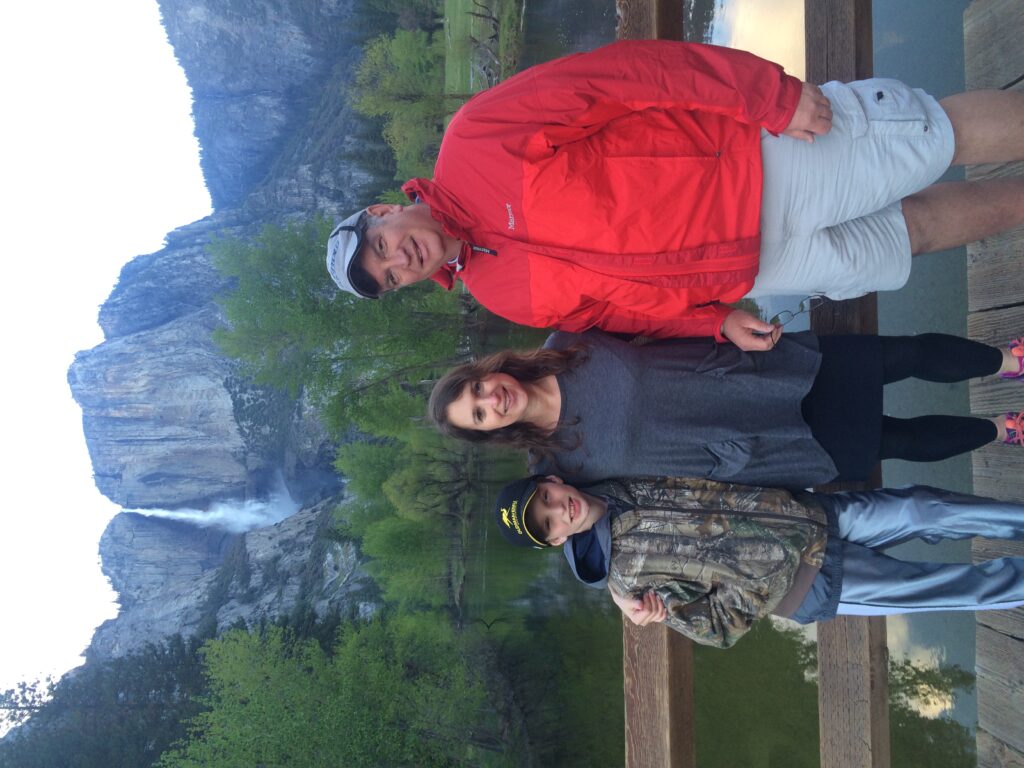
With special people at Yosemite. Can we imagine America without Yosemite? It takes money to protect these special places.
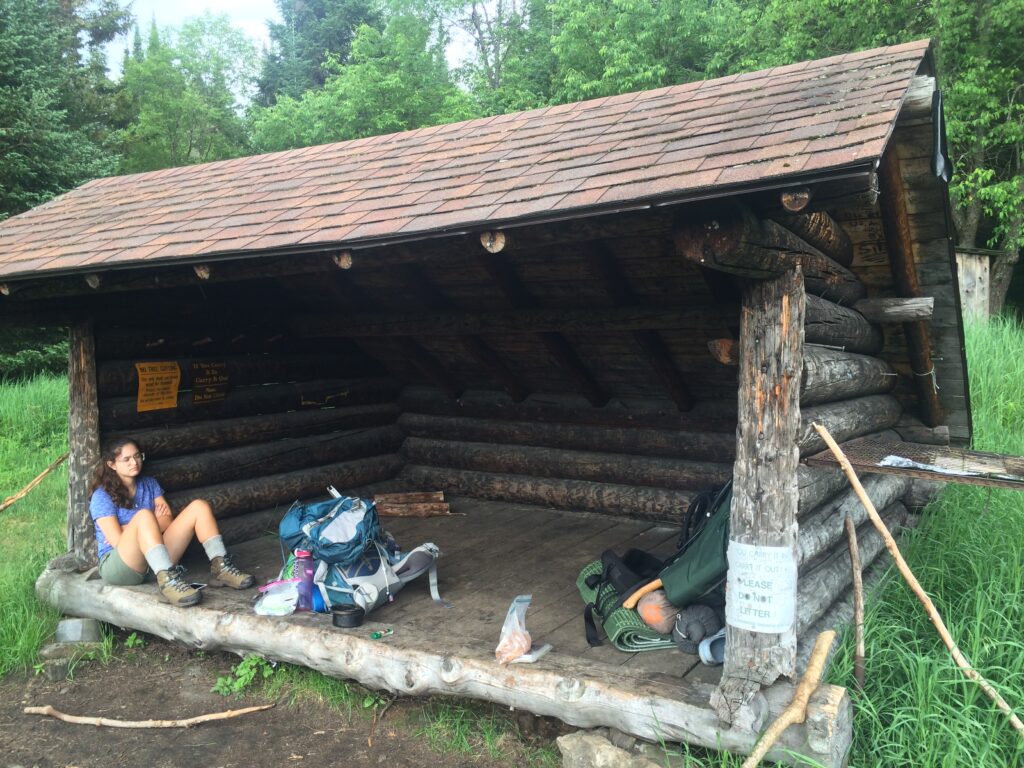
My daughter at the unhappy lean-to. But still, it was a functional, dry lean-to next to clean water in the middle of ADKs wilderness
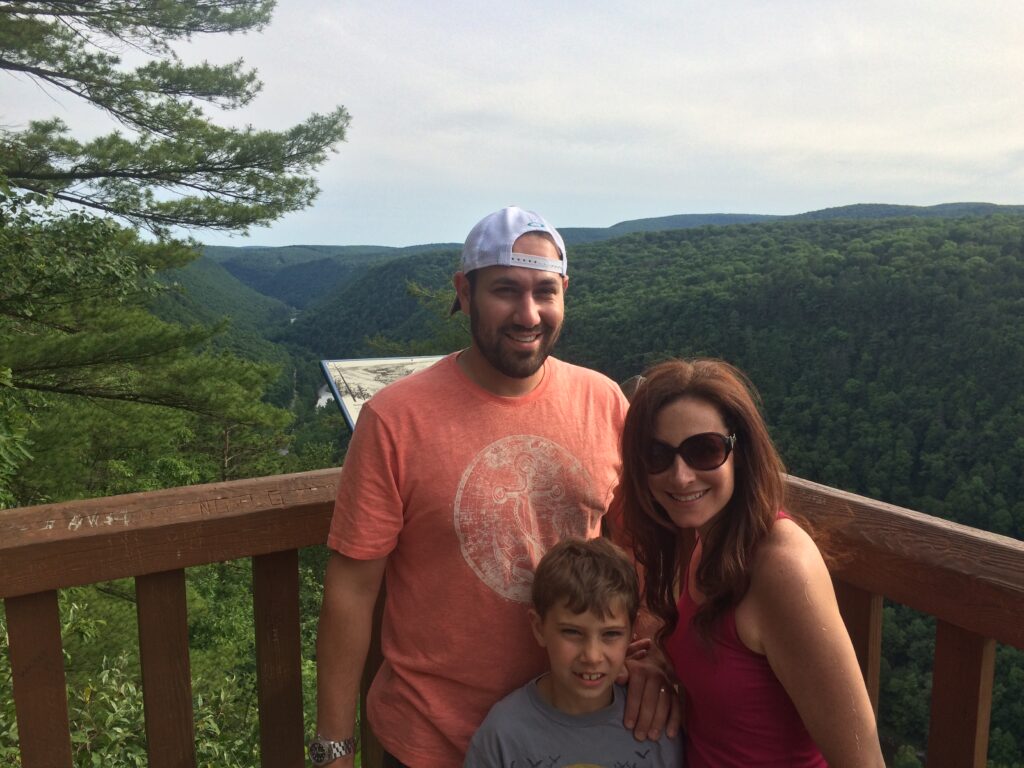
Our friends Mark and Amanda at Leonard Harrison State Park, overlooking the Pennsylvania Grand Canyon
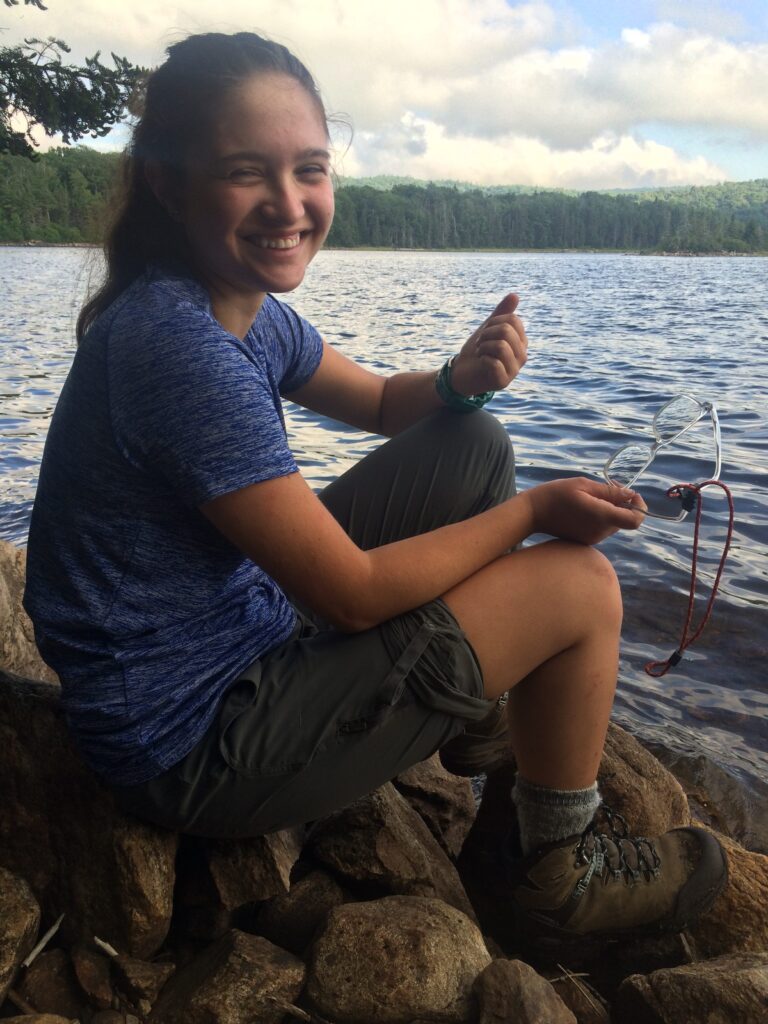
My daughter at Cedar Lakes, a special moment that spurred her on to teach wilderness backpacking to kids. Now she can’t wait to reach the area of no cell reception
Father’s Day
Today is Father’s Day, the day we celebrate our dads, the people who helped us grow into young men and women. For thousands of years, fathers have been the protectors and providers for their families, and they have traditionally been the source of life-saving wisdom and decision making. The lessons and skills they teach their children, especially their sons, are essential for living life properly.
Thank you to my dad, for teaching me to use a chainsaw and an axe from a young age. For giving me the childhood chore of splitting and stacking firewood all summer long, so that our family would have heat and comfort all winter long. Other chores included weeding the garden and shooting pests like chipmunks, squirrels, and groundhogs, all of whom could easily do tremendous damage to the garden in just minutes. And while these chores trained me in self-reliance, hard work, and planning ahead, it was the one thing that dad would not let me do that probably shaped me the most.
Although my dad comes from a hunting family, he himself did not and still to this day does not hunt. Oh, he appreciates wild game and will eat it over everything else, given a choice. But when I started taking my BB gun on deer hunts with neighbors at age eight, my dad always told me I had to get close to the animal to shoot it. As I grew into a young Indian or frontiersman out there in the wilds of southern Centre County, I was prohibited by dad from topping my rifles with scopes. Only open sights were allowed. He said using only open sights taught me woodcraft, requiring me to get close to the wild animals I wanted to harvest, before taking their lives.
“It is only fair,” he said. “You can’t just assassinate unsuspecting wild animals from hundreds of yards away. If you hunt, you must be a real hunter. You must get close and take the animal with skill, on its own terms, where it can see, hear and smell you. That is fair.”
And so last deer season, on a steep hillside deep within the Northcentral PA state forest complex, all of those lessons and preparation came together in one quick, fleeting second. I did the Elmer Fudd thing all alone, quietly sidehilling into the wind, trying to live up to Dad’s dictum. One cautious, slow step at a time. Eyes scanning ahead, downhill, and especially uphill. Ears on high alert for any sound other than the wind in the leaves. Big bucks that are bedded down high above where the puny humans might slip, stumble, and walk, are most likely to flee to higher ground when one of us Pleistocene guys shows up too close for comfort. Deer might hear or smell us coming a long way off, or they might see us at the last second because we are being quiet and playing the wind right, but they know that within a hundred yards or so, we can kill them. So they flee uphill, and in stumbling up against gravity and slippery things underfoot they give us shot opportunities we would not otherwise have.
And so when the strange <snap> sounded out ahead of me, just over the slight rise that led into the large bowl filled with mature timber and rock outcroppings, and an odd looking animal bolted down hill almost bouncing like a fisher, I quickly backpedaled.
Anticipating where the deer would emerge about 130 yards below me, I quickly and also carefully walked straight backwards to where a natural slight funnel in the ground provided a clear enough shooting lane down through the forest to a small stream bed. Anything passing between me and the stream would be broadside at moments, providing a clear shot through heart and lungs if I took careful aim.
And sure enough, the big doe filled one of those spaces so briefly that I don’t even recall seeing her. All I do recall is how the rifle butt fit carefully into the space between the backpack strap over my shoulder and the thick wool coat sleeve, and how the open sights briefly aligned with her chest. The thumb safety had been snicked off already without thinking, and the gun cracked. I fired the gun instinctively.
Quickly raising the binoculars to my face, the doe was clearly visible way down below me, lying fully outstretched on the forest floor just above the stream bank, like in mid-leap with her front hooves and rear hooves completely extended ahead and behind, except she was not moving. She was laying still, her neck fully stretched out on her front legs like she was taking a nap. I watched her tail twitch a few times and then knew she was dead.
Sliding on my butt down to her was more challenging than climbing up to where I had been still hunting her. Northcentral PA mountainsides are the most difficult terrain for humans, in my experience. It is topped with a layer of slippery leaves, then wet twigs and branches waiting underneath to act like oil-slicked icicles, ready to throw a boot way ahead of one’s body. If the wet leaves and branches don’t make you fall down, then the rotten talus rock waiting underneath the leaves and twigs will slide, causing you to either do an extra-wide wildly gesticulating split, or fall on your butt, or fall on your back.
So I scooted downhill to the doe, tobogganning on my butt on the slick forest floor, cradling the rifle against my chest, keeping my feet out ahead of me to brake against getting too much speed and hurtling out of control.
Arriving at her body, I marveled at how she resembled a mule. Her long horse face and her huge body were anything but deer-like. Her teeth were worn down, and she must have been at least five years old. The single fawn hanging around watching me indicated an older mother no longer able to bear twins or triplets. This old lady had done her job and had given us many new deer to hunt and watch over many deer years.
Normally, in such remote and rugged conditions I will quickly bone out the deer, removing all of the good meat and putting it in a large trash bag in my backpack, leaving the carcass ungutted and relatively intact for the forest scavengers. But this doe was so big that I just had to show her off to friends, and so after putting the 2G tag on her ear, I ran a pull rope around her neck and put a stick through her slit back legs, and began the long drag out.
This hunt has stayed with me almost every day since that day. I think about it all the time, because it was so rewarding in so many ways, and emblematic of being a good hunter. Not the least of which was the careful woodcraft that led up to the moment where the smart old doe was busted in her bed and then brought to hand with one careful shot as she loped away, far away. Just as easily I could have been a hunter clothed in bucksin, using a stick bow and arrow five thousand years ago.
Thanks, Dad, for all the good lessons, the chores, the hard work, the restrictions and requirements that made me the man I am today. Without your firmly guiding hand back then, I would not be the man I am today. And what kind of man am I? I am a fully developed hu-man; a competent hunter with the skill set only a dad can teach a son, even if it takes a lifetime.
[some will want to know: Rifle is a 1991 full-stock Ruger RSI Mannlicher in .308 Winchester with open sights. Bullets in the magazine were a motley assortment of Hornady, Winchester, and Federal 150-grain soft points, any one of which will kill a deer or a bear with one good shot. Binoculars are Leupold Pro Guide HD 8×32 on a Cabela’s cross-chest harness. Boots are Danner Canadians. Coat is a Filson buffalo check virgin wool cruiser. Pants are Filson wool. Backpack is a now discontinued LL Bean hunting pack, most closely resembling the current Ridge Runner pack. Knife is a custom SREK by John R. Johnson of Perry County]
Purple woad. Or why hunting leases
Leasing land to hunt on is a big thing these days, and there is no sign of the phenomenon decreasing. Most of it is about deer and turkey hunting.
Hunting leases have been popular for a long time in states with little public land, like Texas, but the practice is now spreading to remote areas like suburban farms around Philadelphia and Maryland. So high is the demand for quality hunting land, and for just finding a place to hunt without being bothered, and so limited is the resource becoming, that leasing is a natural step for many landowners who want to get some extra income to pay their rent or fief to the government (property taxes aka build-a-union-teacher’s-public-pension-fund).
Having been approached about leasing land I own and manage, it is something I considered and then rejected. If a landowner at all personally enjoys their own land themselves, enjoys their privacy there, enjoys the health of their land, then leasing is not for you. Bear in mind that leasing also carries some legal liability risk, and so you have to carry sufficient insurance to cover any lawsuits that might begin on your land.
Nonetheless, some private land is being leased, having been posted before that. And the reason that so many land owners are overcoming the same hurdles that I myself went through when considering land leasing, is that in some cases the money is high enough. Enough people want badly enough to have their own place that they can hunt on exclusively, that they are willing to pay real money.
Makes you wonder what kind of population pressures and open land decreases America has seen over the past fifty years to lead to this kind of change in land use. Makes me think of one anecdotal experience.
On the Sunday of Memorial Day Weekend of 2007, I drove up to Pine Creek to dig the footers for our barn. All the way up I shared the road, in both directions, with two motorcyclists headed in my same direction. That is it. In addition to my pickup, a grand total of two vehicles out for a Sunday drive in the country were on Route 44 and Rt 414.
Fast forward 13 years and my gosh, Pine Creek Valley has nonstop traffic in both directions at all hours. It does not matter what the time of day or night is, there are vehicles going in both directions. And not just oversize pickup trucks possibly associated with the gas drilling occurring around the area. Little tiny dinky tin can cars are going up and down the valley, too. There are literally people everywhere here now, in what had been the most remote, undeveloped, quietest corner of rural Pennsylvania. Even if you go bear hunting on some sidehill in the middle of nowhere up in Pine Creek Valley, you will encounter another hunting gang or two. Which for bear hunting is actually a good thing, but the point being that there are people everywhere everywhere everywhere in rural Pennsylvania.
OK, here is another brief anecdote. Ladies, skip ahead to the next paragraph. About ten years ago I was fishing on the north end of the Chesapeake Bay. When I was finished for the day, I drove back north toward home. At one point I had an urge to pee, so I began looking for a place I could pull off and pull out, without offending anyone. Yes, I have my modest moments. And you know what? The entire region between The Chesapeake Bay’s northern shores and the Pennsylvania Mason-Dixon Line, is completely developed. Like wall-to-wall one-two-three-acre residential lots on every inch of land surface. At the one place that finally looked like I was finally going to get some relief, I stepped out of the car and was immediately met with a parade of Mini Coopers and Priuses driving by on the gravel road to their wooded home lots. There was literally people everywhere, in every corner, in every place.
So what happened here?
There are more people and there is more land development, both of which leading to less nice land to hunt, fewer big private spaces for people to call their own, and so that which does exist is in much higher demand.
Enter Pennsylvania’s new No Trespassing law. AKA the “purple paint” law.
Why was this new law even needed? Because the disenfranchised, enslaved Scots-Irish refugees who originally settled the Pennsylvania frontier by dint of gumption, bravery, and hard work had a natural opposition to the notions and forms of European aristocracy that had driven them here. Such as large pieces of private land being closed off to hunting and fishing. And so these Scots-Irish settlers developed an Indian-like culture of openly flouting the marked boundaries of private properties. Especially when they hunted.
And this culture of ignoring No Trespassing signs carries forth to this very day.
Except that now it is 2020, not 1820, and there are more damned people on the landscape and a hell of a lot less land for those people to roam about on. Nice large pieces of truly private land are becoming something of a rarity in a lot of places. Heck, even the once-rural Poconos is now just an aluminum siding and brick suburb of Joizy.
So in response to our collision of frontier culture with ever more valuable privacy rights, Pennsylvania now has a new purple paint law. If you see purple paint on a tree, it is the equivalent of a No Trespassing sign. And if you do trespass and you get caught, the penalties are much tougher and more expensive than they were just a few months ago.
And you know what the real irony is of this purple paint stay-the-hell-out boundary thing? It is a lot like the blue woad that the Celtic ancestors of the Scots and Irish used to paint their bodies with before entering into battle. Except it is now the landowner who has painted himself in war paint.
Isn’t life funny.
Hunting season withdrawal, carpe diem reminder
Despite hunting a lot this past season, I am going through serious withdrawal symptoms. And mind you, hunting for small game is not done yet, and neither is trapping. And snow geese are in. So field opportunities do remain.
But with the bobcat and fisher trapping seasons now over, the justification for really heading deep into the silent woods has ended. Besides, a fisher just took up residence about 100 yards from the cabin. Only a few weeks after the season ended. It’s a “ha ha” finger in the eye reminder that some things are just not meant to be.
To be honest, I did not trap much this year, due to time limitations that kept me trapping right around where I have been working. And also to the fact that my outdoor work activities scared away the animals that will normally come in to explore the scents we use around our traps. And the freeze-thaw-rain-freeze-thaw-rain cycle of the past couple of years happened yet again during December, our best trapping time. Using footholds in those conditions is tough, because they can move around as the earth thaws during the day and re-freezes at night. When an animal steps on a trap that has moved in its bed, the trap moves under its paw, and then the animal digs up the trap. And If I put out winter-resistant cable restraints in that kind of weather, I can expect a very muddy animal waiting for me. And I am not in the business of shampooing coyotes and foxes. Too much time. So trapping season has pretty much passed me by, though I will try for a specific coyote, and maybe a few more possums in cage traps, just to save some springtime whippoorwill nests from being raided.
A few more squirrel hunts, a rabbit hunt or two with a 1920 Parker Brothers 20 gauge side-by-side, and some predator hunts will be had. Good times for sure, usually with good friends, but the few days of climbing high and sneaking through the quiet snowy mountains are gone. They ended almost before they began.
Hunting season is an annual reminder to grab all of life and squeeze and cajole every bit of living and enjoyment from it that we can, because before we know it, it all ends almost before it began.
At my grandfather’s 100th birthday (he lived almost exactly three more years after), he blew out the candles on his cake and sat back.
“I don’t know where my life went,” he said, staring into his chocolate cake. And he was a guy who had really lived.
My comments to the PA Game Commission
The Pennsylvania Game Commission board of commissioners will be meeting this weekend, to set next season’s dates and bag limits. Like many other people, I submitted comments by email last week. From past experiences with this, I know that the commissioners read comments and requests from the public. Some of my comments, and those of my son, have received direct feedback from various members of the board.
A key to getting the commissioners to read and truly consider your comments is to submit them with plenty of time for the recipients to read them. If you submit comments a day or two before the meeting, it’s a very low likelihood of anyone having time to read them. Also, try to keep comments short, to the point, and sweet. Comments with prolonged bitching, whining, and playing biologist when you have no training or education or even a novice’s interest in wildlife biology, are all ways to ensure that your audience at best glances at your comments.
“Dear Commissioners,
Hunting should be fun, and therefore our small game seasons should run unbroken from their Fall opening to their February close. Whatever long gone reason for the on again-off again pattern of small game seasons, Pennsylvania must create opportunities for everyone. No biological reason exists for hiccup-style seasons. Few if any other states have this odd pattern. Let’s just let our hunters have fun and hunt.
In that vein, please consider allowing bodygrip traps on running pole sets in our most rural WMUs. The idea that a loose domestic dog is going to get caught in a trap in the middle of a state forest wilderness is preposterous. Same is true on private land. Same goes for allowing snares. We need all the tools we can get to manage coyotes. With now three years of crazy freeze-thaw-rain winter weather cycles, it’s impossible to rely on footholds. Cable restraints should be allowed throughout the whole season, and snares should be allowed on private land and or on public land in the Big Woods WMUs.
Finally, please put one of our Sundays on the day after the Saturday bear rifle opener, and another Sunday on the day after the Saturday deer rifle opener. This will create the most energy and excitement for our hunters. Even better, make bear and deer rifle concurrent!
Thank you for considering my thoughts,
–Josh”
Deer season is mostly over…now what happened?
Everywhere I checked, deer season (rifle) was just…off… this year.
The deer were off their usual trails, off their usual habits, patterns, just not cooperating. People hunting up in the Big Woods and down in the farm country all said that opening day was the quietest they had ever heard.
“When I was a kid, opening day sounded like a war zone,” says Ed, a product of west-central PA and lifelong hunter.
“This year, I heard nine shots all day. What the hell is that about?” he says emphatically.
And how could I not agree? Heck, I recall 2005’s opener, because I warned a flatlander non-hunting new neighbor that it was going to sound like “Bosnia” around their newly acquired country retreat. And it did. And it was a rewarding feeling looking up into the snow-covered mountains and seeing blaze orange dots sprinkled all over the landscape.
This year, we heard four or five shots on opening Saturday and maybe two or three shots on Monday, up in the Big Woods. And yet plenty of deer were moving. Talk about strange! Totally uncharacteristic.
Might be that our hunters are aging out in larger numbers than we anticipated, or that too many are part of the “professional whiners club,” never satisfied with the deer we have, but rather longing for the bad old days of over-abundant deer that we used to have. And therefore not participating in deer hunting, as a form of protest.
I don’t mean to pick on people, but it is disheartening and frustrating to hear the unfair abuse some Pennsylvania hunters heap on the Pennsylvania Game Commission and on anyone else who supports the PGC’s science-based wildlife management. No question, there are fewer deer…and so what is wrong with that?
And in fact, due to the hunters opting out because they say there are not sufficient deer to hunt, the deer numbers everywhere sure appear robust to me. They aren’t getting hunted very hard, so they are naturally reproducing quite fine. But the harvest numbers are down everywhere I hunt, in both the Big Woods and the farm country. Maybe we will be seeing longer deer seasons as a result.
–Some Reflections–
Deer drives: Like bear drives that are so popular the week before deer rifle season, deer drives are a necessity if hunters are going to see deer. Deer are adapatable, intelligent animals, and after 20 years of concurrent doe-buck hunting, they have changed their behavior. Gone are the days when a hunter could sit at Pap’s stand and expect to fill a buck tag. Now, the deer are moving around old stand sites, or staying hunkered down altogether. It takes a boot in their behind to get them moving, and once they are moving, deer begin to make mistakes. If hunters are ready enough, they can exploit those mistakes and start filling tags.
But just sitting is a very tough way to kill a deer any longer, under most conditions. So try deer drives. Even a two-man “leap-frog” drive is very effective. One hunter posts up in a good ambush spot, while the other slowly and quietly stalks into the wind or on some other trajectory, say for 300-500 yards. Then the driver becomes the poster/stander, and the former stander becomes the driver, moving around and ahead of the other hunter. Pennsylvania whitetails usually loop around and backtrack, so it is common to bump deer that will try to get around behind you. If you have a buddy standing back there, the deer will often present a great shot while making their “escape.”
Deer scents & lures: If every other hunter is spraying a gallon of doe pee all over the landscape every time he or she goes hunting, what kind of effect do we think this will have on the deer we are targeting? If you think it is very confusing to the deer to be bombarded from every side by olfactory lures, then you are correct. Americans like everything BIG – guns, cars, trucks, competitive sports, homes, etc., and deer scents are no different.
A lot of hunters approach deer estrous scents like “Heck, if a few drops on a tampon hung in a tree branch is good enough, then a whole 2-ounce bottle should really do the trick!”
This is wrong thinking, because it is a total overdose. More is not better. Deer cannot handle the overdose. Now I am encountering hunters using “Buck Bomb” cans that are the size of a bathroom fresh scent can; that is, enough snoot material to wipe out a city. Problem is, deer are just single animals, and like humans, when they are carpet-bombed by too much estrous scent everywhere all of the time, they become confused, even spooked, and the scents lose their effectiveness.
So use your estrous scents sparingly, only at specific times, when the rut is at its highest. Like October 25th through the end of archery season. And maybe a few drops during the late season, because some does do come back into heat. The less you use, the more effective it will be.
Quality hunts: For better or for worse, right or wrong, killing a buck is the goal of most deer hunters. A buck is the ultimate symbol of hunting prowess, or good fortune, and the bigger the rack, the bigger the bragging rights. So far I have not killed a buck this season, and I doubt I will. But I am cheerfully accepting my fate, because I did take a big old matriarch doe on state forest land that sees little hunting pressure.
Long hike in and up up up, then a J-hook turn into the wind and sidehilling very slowly, carefully, trying not to fall loudly or too often in the wet leaves and rotten rock, brought me to a big old doe in her bed. She jumped up at the sound of a twig snapping under my boot, and ran around trying to figure out what it was. Within moments she was loping downhill at an angle, and at a rather longer distance than I had anticipated, I put a .308 150-grain slug through her lungs. No sign of the buck I was sure was hiding way up in that remote and vast wash, but the old doe was a pretty tough quarry, too. And so I consider this a real quality hunt, fairly won with hard work, good woodcraft and good shooting in a beautiful environment (Nothing like solo hunting the big woods. My favorite thing). This for me makes my season a good one, buck or no buck.
See you all at the Great American Outdoor Show in early February, where I will be volunteering with the PFSC (Pennsylvania Federation of Sportsmen and Conservationists, formerly Clubs) a lot. Please come by and say hello.
Cabela’s-Bass Pro merger = Lower Quality for Sportsmen
[UPDATED SEE BOTTOM for IMPORTANT DETAILS] Cabela’s hit its stride about ten years ago. A national, trend-setting family-owned outdoor business, the company took from the best and discarded the rest. Innovation there never stopped, as they improved on Zeiss-quality optics made for price-pinched Americans, and innovated rain-proof soft fleece parkas suitable for stalking deer with a recurve bow in wind, rain or snow, and all combinations thereof.
No one else made these products, and certainly not at their prices.
Some might say that Cabela’s took the best names and put their own name on it, and there may be some truth in terms of boots and optics. But when it came to outdoor clothing, the company did its own thing, making outdoor sports so much more fun. Every now and then they would do a run of virgin wool hunting shirts. Outside of Filson and Pendleton, it is tough to think of virgin wool shirts being offered anywhere else. While the Cabela’s shirts were not near the quality of the Filson or Pendelton, they were not anywhere near the price, either. These were true working wool shirts for a fair price that you would not regret tearing or getting soaked in bear blood.
Perhaps there are some industry insiders with a tale to tell here, and I would stand corrected if proven wrong.
Along came competitor Bass Pro a few years ago, and bought out the Cabela family. The merged Cabela’s-Bass Pro union made little sense for innovation, and those outdoorsmen who greatly benefited from Cabela’s unique service held their collective breath. Bass Pro has been known for marketing all the usual stuff, plus a lot of Chinese junk, and also their own RedHead label clothing and some equipment.
RedHead has been around for a long time. An LC Smith 20-gauge double barrel in my care came in its apparently original Red Head canvas case. Nicely made, quality product. From the 1940s, when just about everything was made with pride.
Fast forward to now and RedHead is not known for high quality, or for innovation. It is mostly slapped-together variants of better-made products by Cabela’s and others. I guess the wool socks are pretty good. But most of it is not high quality. At all.
So fast forward to me getting on-site freezing-rained out of a distant hunting trip I had planned all year. All of the usual high quality equipment that has worked for me all these many years would not have worked under the unusual wet and very cold conditions I found myself in; in fact, had I stayed out there in that freezing rain, I would have undoubtedly gotten hypothermic and probably died. My kit was not designed for that unforeseen situation, and so I hightailed it out of the back country and glumly slunk home. No deer is worth dying for.
But I feel determined to never have this happen again. We get so few of these opportunities as it is; once we are out there in the middle of nowhere, we must take advantage of all the hunting time there we can make.
Subsequently looking for new clothing and kit capable of both light weight and all the other properties has left me slack-jawed. The Cabelas-Bass Pro merger has resulted in a really narrowed field of high quality outdoor clothing and kit. Instead of maintaining Cabela’s high standing products and focus on continuous unique product development, Bass Pro has cut off the innovation pipeline, used inferior materials in successful old product lines, and substituted other more expensive makers like Sitka and ScentLok for the old standby Cabela’s brands.
Very few of the high quality products that Cabela’s made, like lightweight, waterproof, silent parkas in different camouflage patterns, are available any longer.
So it seems that the merger has not benefited sportsmen, and that Bass Pro is just slowly squeezing whatever value it can get out of Cabela’s before it eventually shuts it down and forces sportsmen to consider the solely mediocre stuff that Bass Pro specializes in.
So for those of you who enjoy shopping for high quality outdoor gear, get ye to a local Cabela’s store soon. Look on the closeout racks for the stuff you used to take for granted; it won’t be coming back. Buy the old Cabela’s stuff before the company is openly yet one more victim of short-sighted corporate greed and sloth.

you clicked on the Instinct button and….and there is nothing there. Under Bass Pro ownership, Cabela’s is abandoning its long history of gear innovation and product design specifically done for serious hunters.
UPDATE 12/15/19: Turns out there was a much bigger reason for the downfall of Cabela’s. Here is the kind of in-depth reporting that Americans deserve: https://youtu.be/UatnTSwEUoc
It’s that time of year again, Pt. II
It is now “that time of year again,” but Part Two.
A month ago your firewood had better have been laid up and close to perfectly dry, or you were going to have an uncomfortably cold winter in rural America.
Now, a month later, a whole bunch of hunting seasons are upon us. Small game, trapping, deer archery, bear archery…and many people are afield a serious amount of time. Some people try to catch the deer rut in a couple different states with their bow. It can become a crazed time, where the humans are just as worn down and rutted up by the prospect of catching unawares a big old wary buck who, in his brief moment of annual craziness, lets down his guard.
Usually, I do not begin trapping in earnest until December, when all pelts are truly prime and when the bobcat and fisher seasons begin. Early on I set out cage traps to thin out the skunks and possums that will otherwise clog up my best sets later on. Never one to sell furs, trapping for me has always been about helping ground-nesting birds against an overabundance of nest-raiding mammals pulsing out from suburban sprawl habitats. With Russia and China in bad financial and economic situations the past five years, wild fur has not been in as big demand as the past. This lower demand has led many professional trappers to abandon their lines and wait for prices to come back up. In turn, that let-off in trapping pressure results in TONS of raccoons, possums, skunks etc running around. Over the past couple of weeks I have seen more road-kill raccoons than in many years past all together.
And this high population of raccoons means higher rates of rabies, trash-raiding, fights with pets, etc.
My favorite type of hunt is the solo wilderness excursion. Sleeping in a cold tent, bundled against the night time freeze, waking up to some snow on everything, enjoying a hot tea to start the day, and wandering into the wind, trying to find buck or bear tracks. Or in the case of a big male bear, making sure he isn’t on my track, like two years ago.
Is there danger in this? Sure. Then there is danger in being hit by a car, or falling and damaging a body part. There is danger in never experiencing life, and thinking that the modern risk-free cocoon most of us live in is either normal or healthy. It is neither.
And so it is that time of year again, when every fiber in my body says “Get outside, NOW!” It is a time of forgotten or deliberately misplaced professional obligations, phone calls returned on a Friday afternoon, instead of the prior Monday morning. I hope friends and colleagues will forgive me if I am a little late in getting back.
Nature is calling on the phone, it’s for me, and I gotta run.
I’ll be back. Promise.

